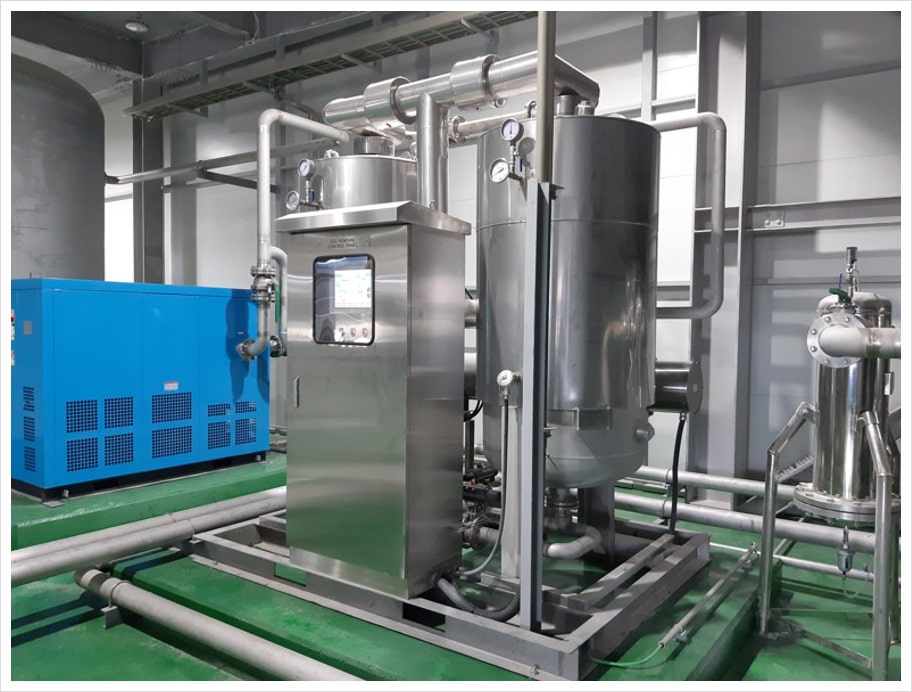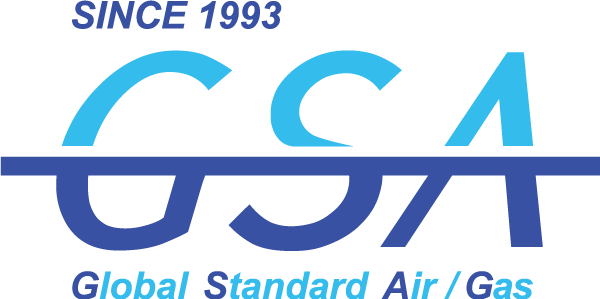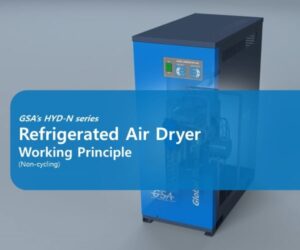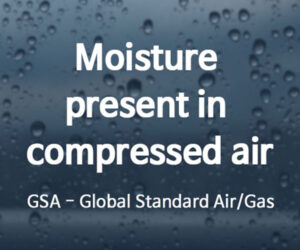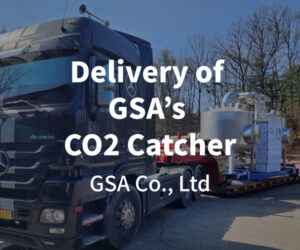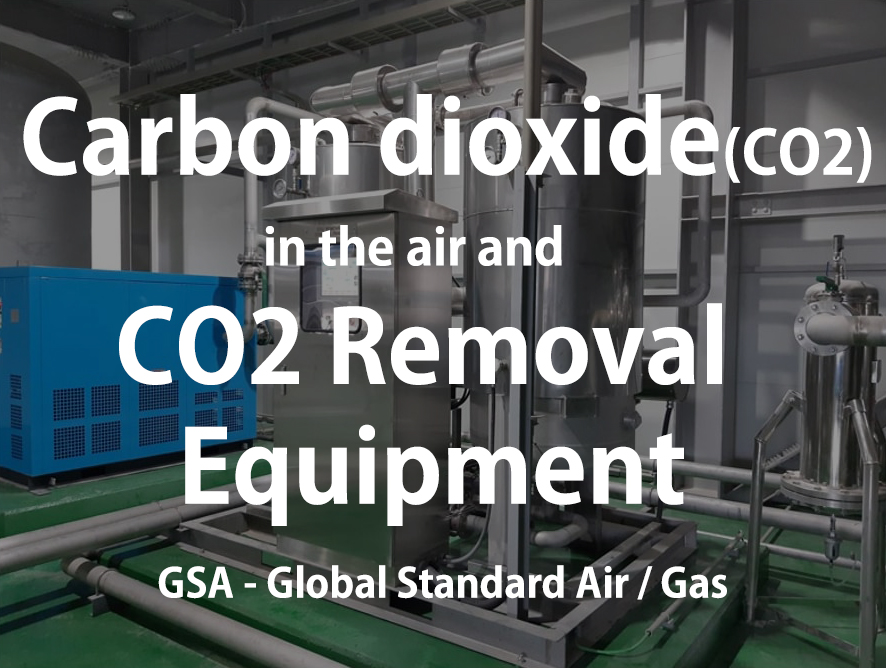
Today, we would like to learn about atmospheric carbon dioxide (CO2) and the CO2 removal device produced by our company.
In March 2015, the National Oceanic and Atmospheric Administration (NOAA) announced that the global carbon dioxide concentration exceeded 400 ppm for the first time as a result of analyzing air samples taken from clean areas around the world.
This is the first time since the first observation in 1958, and is the result of an increase of 120 ppm since industrialization in the 1750s.
*ppm (parts per million): Used to indicate how many parts per million a quantity accounts for.
Carbon dioxide, also called CO2, is a gas produced when carbon or its compounds burn completely or when organisms respire or ferment. It occupies about 0.035% of the atmosphere, so its specific gravity cannot be said to be high, but it is a gas that has as great an impact as oxygen in our lives.
Living things, including humans, decompose organic matter through respiration while obtaining energy necessary for life, and carbon dioxide is also produced in this process!
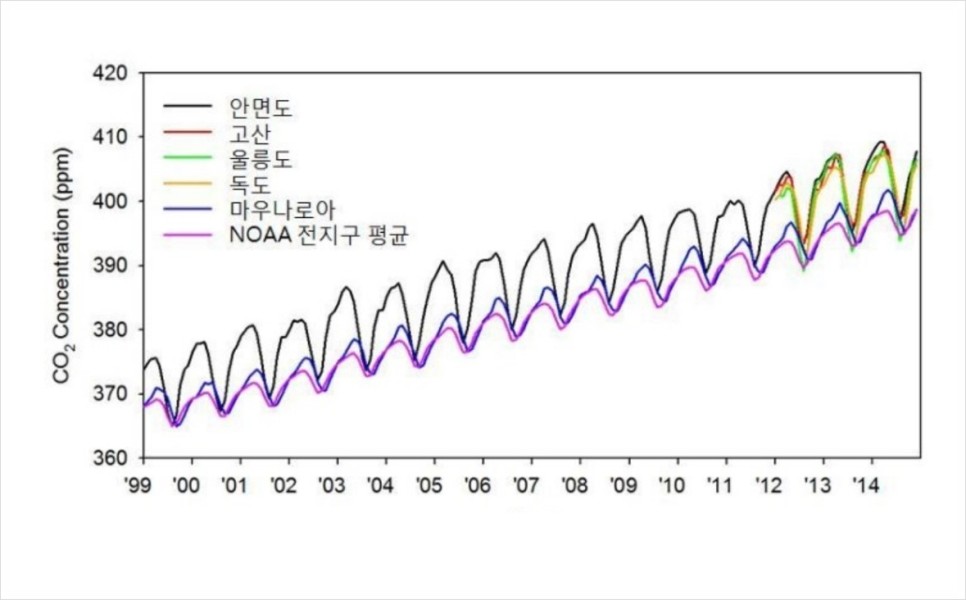
In addition to nitrogen and oxygen, the air we breathe contains small amounts of carbon dioxide (CO2). Today, the concentration of CO2 in the air around us is about 410 ppm. During air compression with the compressor, no more CO2 is added, but neither is it removed.
Therefore, compressed air also contains a small amount of CO2. Like the air we breathe, CO2 is not harmful for most compressed air applications.
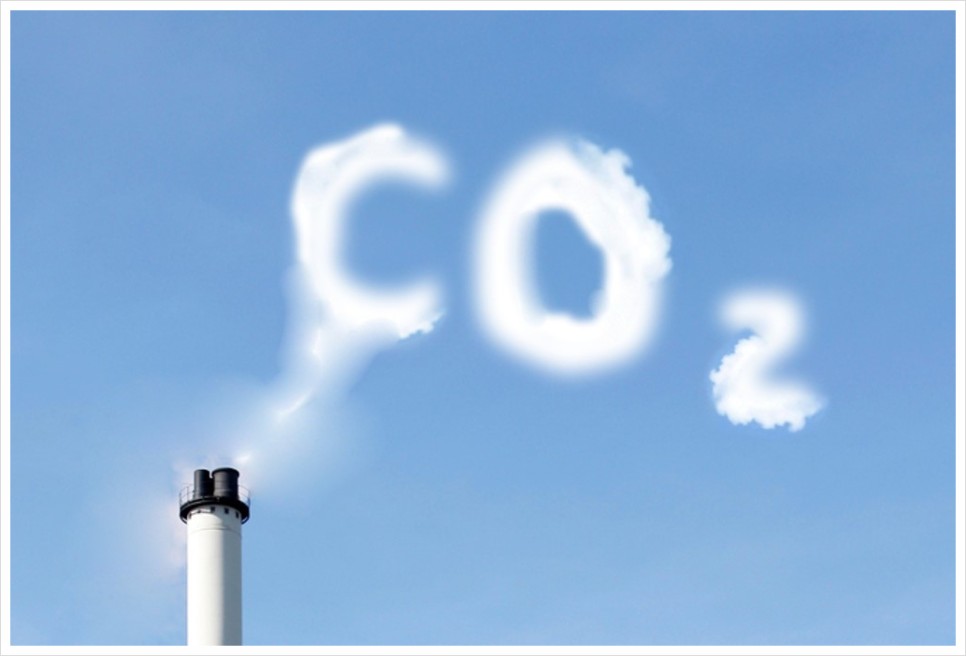
Still, why do we need to remove CO2 from compressed air?
As mentioned before, CO2 in compressed air is not harmful for most applications. However, some applications require ultra-dry, CO2-free air.
In these applications, if the two substances contained in compressed air are used without adequate removal, the final product quality can be seriously compromised.
Here are some examples:
CO2 negatively affects the life and quality of chemical raw materials used in lithium battery cells. In the industrial gas industry, when air is separated into nitrogen, oxygen and argon gases, CO2 is frozen in the cold box of the air separation unit.
This hinders air-gas separation, resulting in lost production and downtime. Instruments in a laboratory environment require purified air with a minimum of moisture and CO2 to obtain stable and consistent measurement results
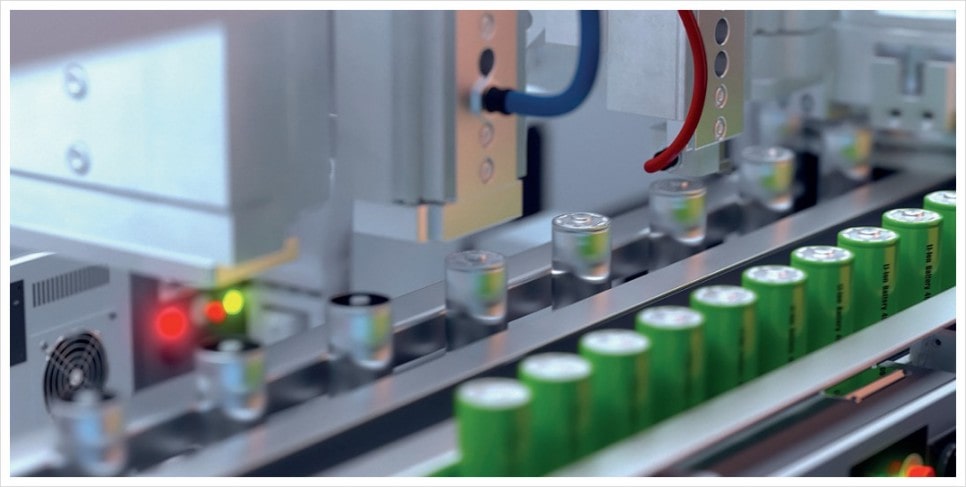
Technologies for separating mixed gases include low-temperature separation, absorption, membrane separation, and adsorption.
The double adsorption method is a technology that uses the principle of selectively adsorbing gas mixtures on the surface of a solid having micropores, and the role of the adsorbent is very important.
Carbon Molecular Sieve (CMS) is a carbon adsorbent with a constant pore size. Carbon dioxide and methane gas, which are greenhouse gases, can be separated using the property of allowing only molecules smaller than the size of pores to pass through.
Carbon molecular sieves have fast adsorption and desorption rates because pores of a size similar to that of gas molecules are uniformly distributed on the surface. This makes it a widely used material for gas separation processes.
In general, it is used to separate oxygen and nitrogen or methane gas and carbon dioxide from the air through ‘Pressure Swing Absorption’ (PSA), a gas and refining process.
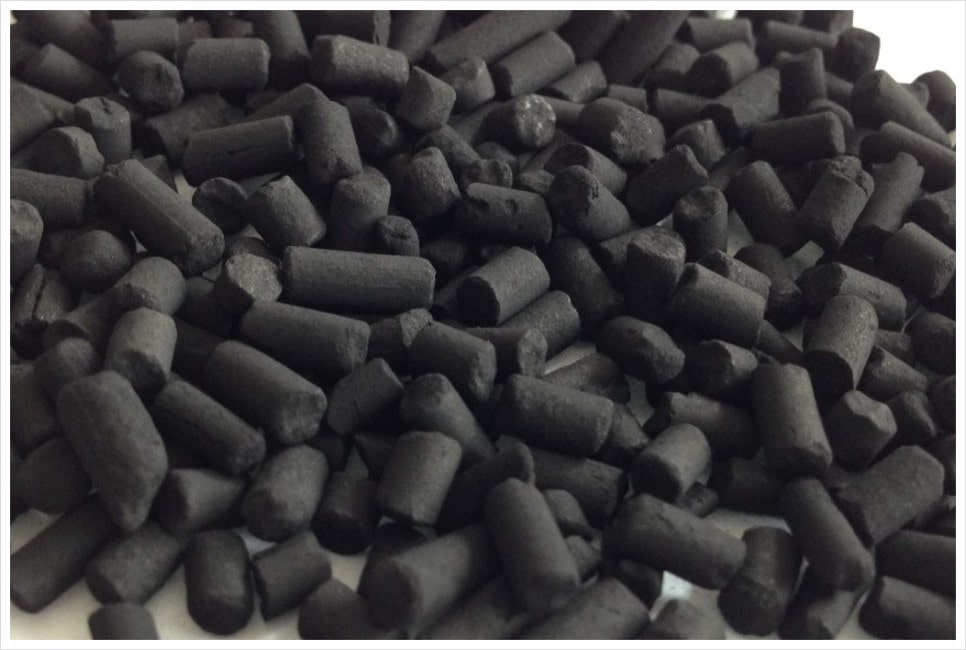
Carbon dioxide has a faster adsorption rate than methane, and oxygen even outperforms nitrogen.
Carbon molecular sieves can separate specific gases by using the difference in the diffusion rates of these molecules. Compared to other gas separation methods, it does not require a lot of energy or expensive equipment, so it is economical and highly efficient.
In addition, compared to polymer membranes and zeolite molecular sieves, it has the advantages of high selective separation for plate-shaped molecules, hydrophobic (low affinity for water) surface, chemical resistance and heat resistance, and can be recycled.
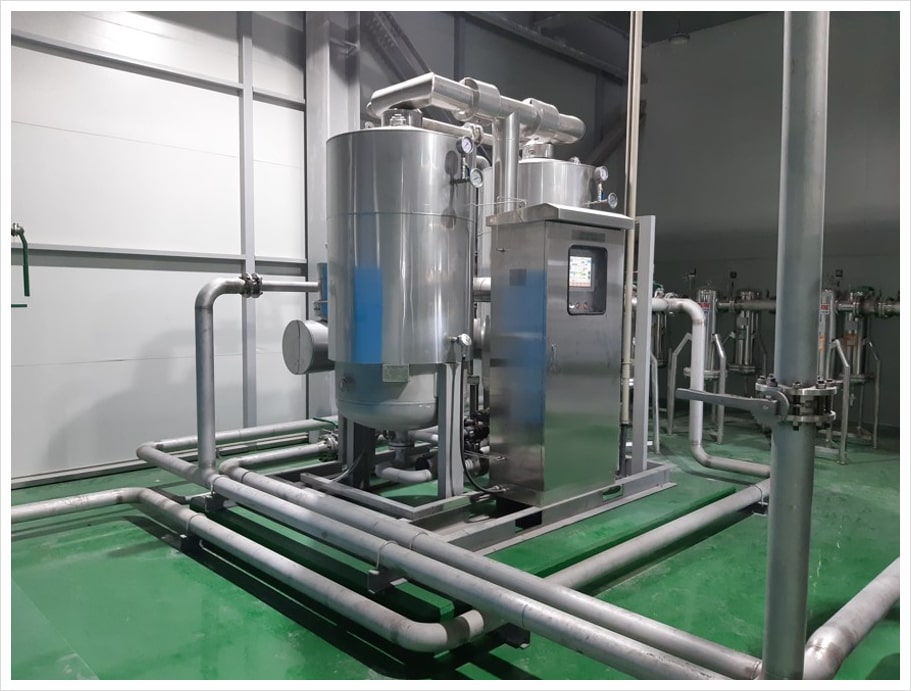
The operation of our CO2 removal device is fully automatic according to the sequence of PLC or microcomputer.
Compressed air containing moisture and CO2 flows into the lower part of the two adsorption towers, where the adsorption process takes place, and then passes through the adsorbent bed and moves to the upper part. In the process of moving to the upper part, moisture and CO2 are separated from the compressed air due to the difference in diffusion rate due to the pores of the adsorbent, and dry compressed air from which CO2 has been removed is supplied.
Among the two adsorption towers, one adsorption tower is performing the adsorption process while the other adsorption tower is performing the regeneration process. The regeneration process consists of a heating process and a cooling process. The heating process uses high-temperature air heated by an electric heater to desorb moisture and CO2 components adsorbed on the adsorbent and then release it to the atmosphere.
The cooling process is a regeneration process that cools the heated adsorbent to ensure good adsorption. When the heating and cooling regeneration process is completed, the dynamic pressure process of boosting the regeneration tower to the same pressure as the supply pressure is carried out. After the dynamic pressure process is completed, the two adsorption towers are switched, and the adsorption tower where the adsorption process was performed undergoes a regeneration process, and the adsorption process is performed in the adsorption tower where the regeneration process was performed.
This series of processes is fully automatic according to a set sequence, and the dry air from which CO2 has been removed is continuously supplied.
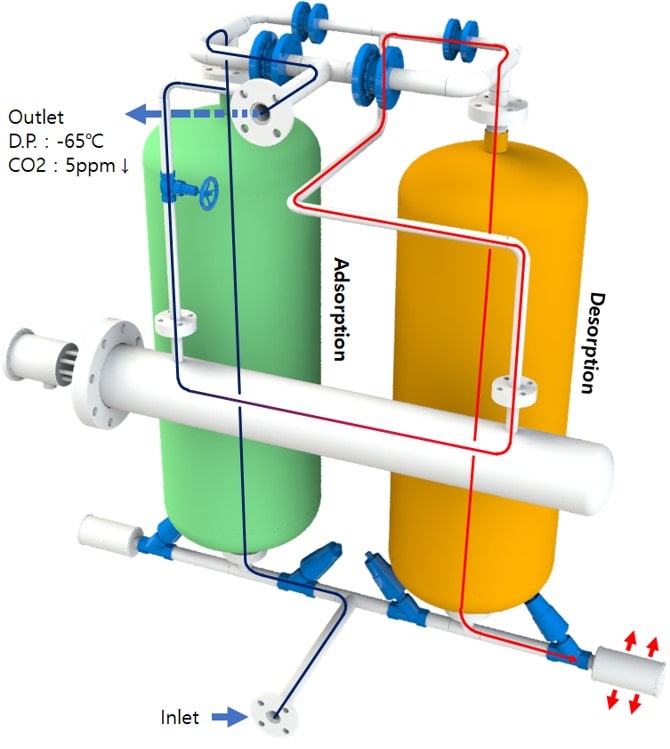
How to remove CO2 from air?
We manufacture/supply dedicated CO2 removal units with proven designs similar to our adsorptive air dryer designs.
The lower part of the adsorption tower of our CO2 removal device contains activated alumina to remove moisture in the compressed air, and Molecular Sieves are filled in the upper part to absorb a small amount of moisture and CO2 to effectively absorb moisture and CO2 in the compressed air.
It usually removes CO2 with a dew point below -65℃ and 5ppm or less.
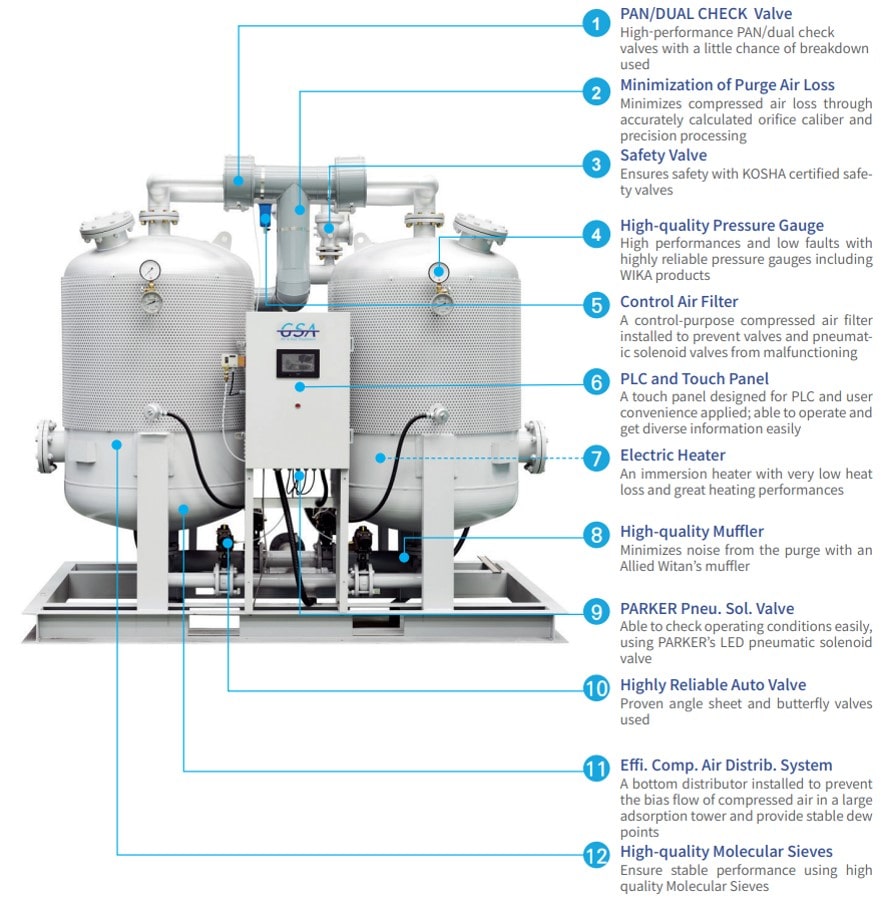
The CO2 removal device designed and manufactured by our company is suitable for indoor and outdoor use and is made of carbon steel or stainless steel. Below is a picture of the site where our CO2 removal device is installed.
